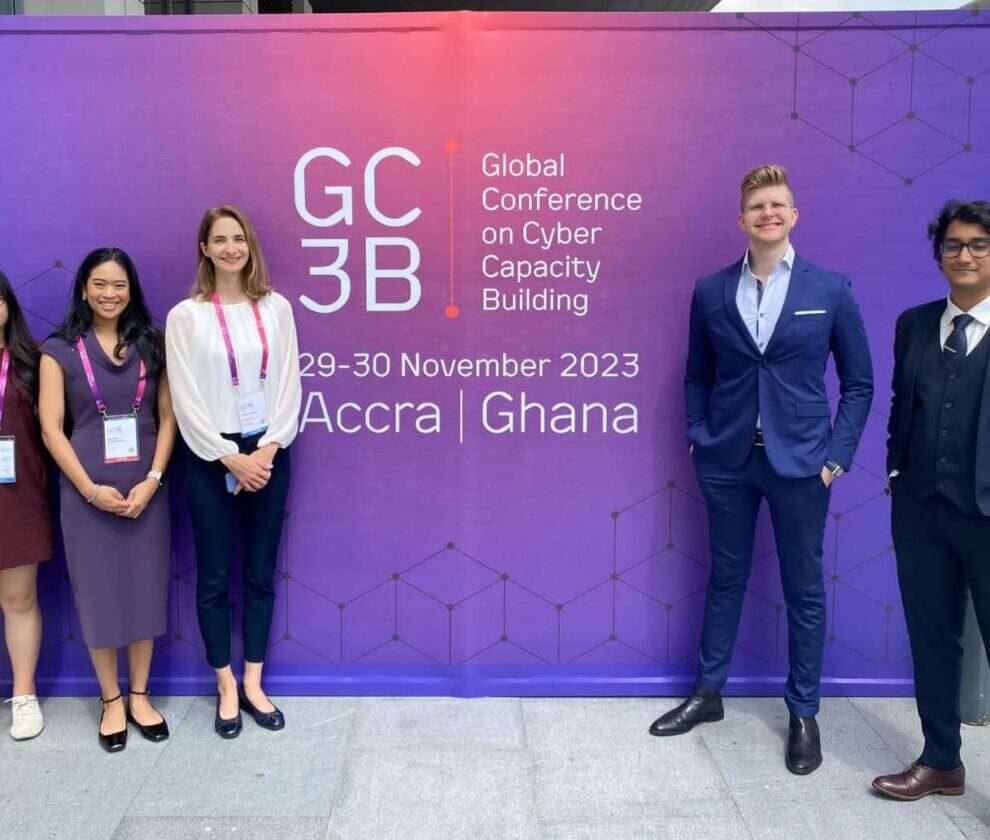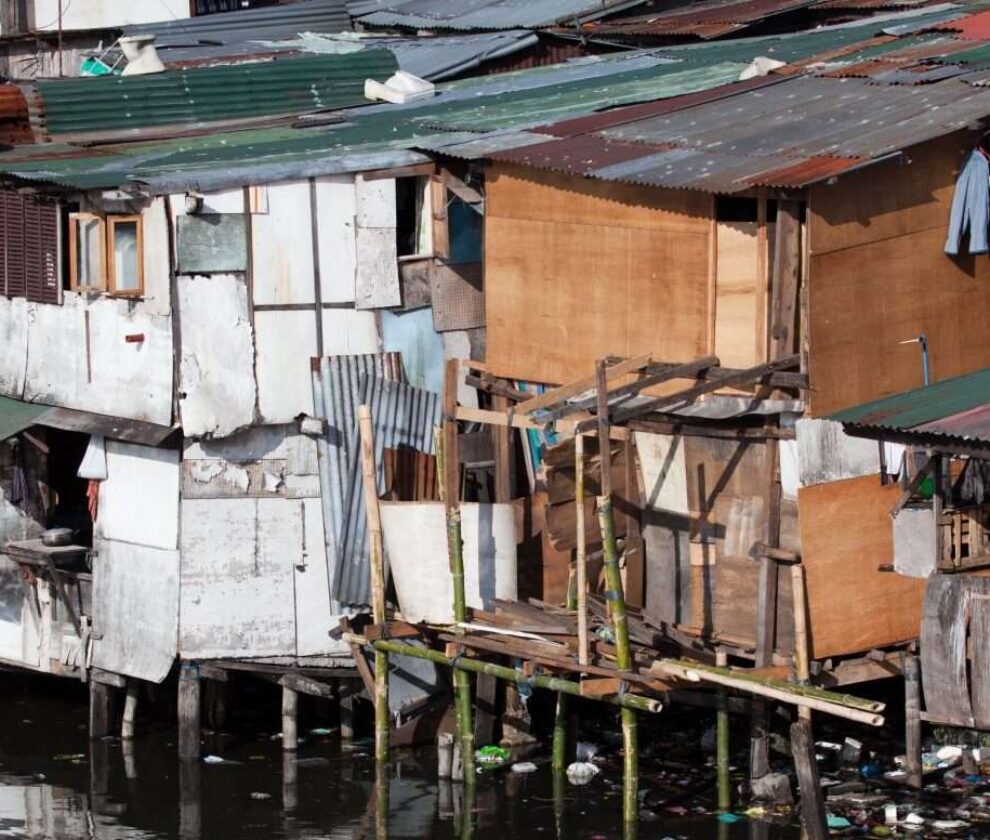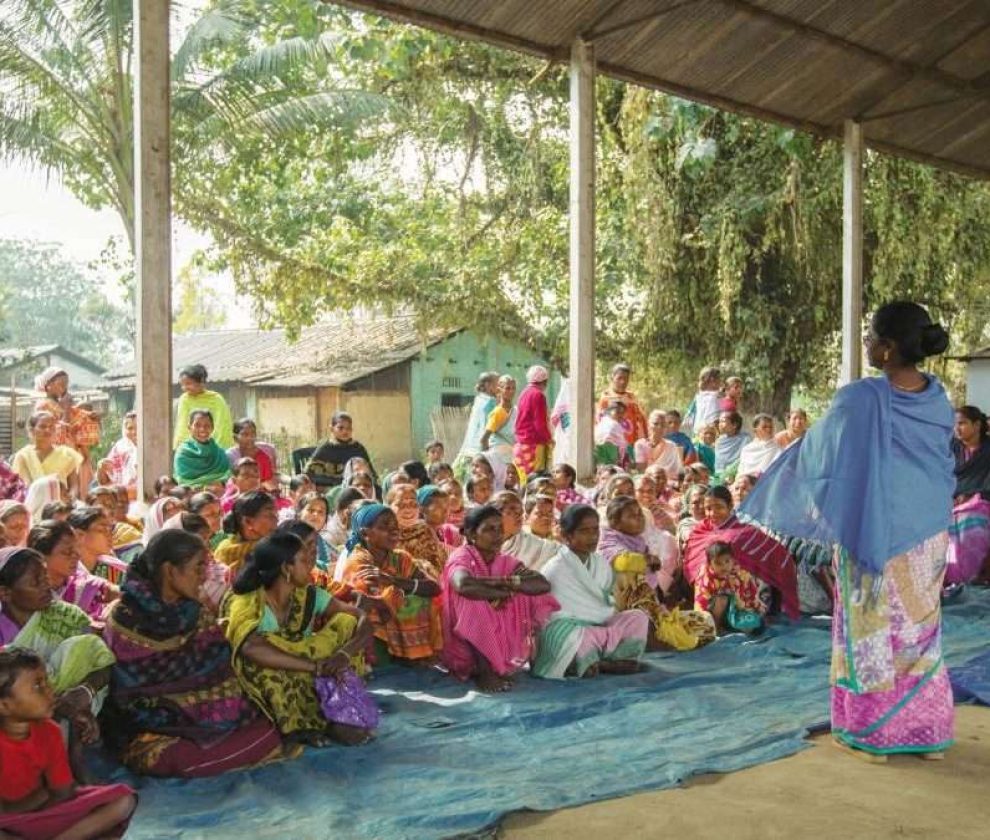Bangladesh, a densely populated country in South Asia, is grappling with the complex issue of slums. With an estimated population of over 170 million, it is reported that approximately 38% of the total population lives in urban areas where 52 % of the urban population resides in slums, equating to around 33 million people. These slums are characterized by substandard housing conditions, lack of basic services, and limited access to healthcare and education. Several factors contribute to the rise in slum populations in Bangladesh & as per the Global Climate Change Risk Index 2021, Bangladesh being the 7th most climate vulnerable country it is no secret that natural disasters such as floods, cyclones & riverbank erosion, are one of the key factors behind increasing migration & population in urban slums. Cycle of poverty and limited socio-economic mobility also leads to intergenerational transmission of slum living, further adding to the slum population.
Flowing in water crisis: Slums are deprived of basic WASH resources
Among many challenges, the Water, Sanitation, and Hygiene (WASH) situation remains a significant one, with a substantial proportion of the population lacking access to basic WASH facilities. Most of the slums have no legal connection to the water supply and there is also a lack of a healthy sanitation system. Two third slums have no sewerage system. Wastages are directly being poured into rivers and other water bodies. As a result, water pollution is increasing gradually. Every year around 50,000 children in the slums are being infected with cholera, diarrhea, typhoid and other water-borne diseases.
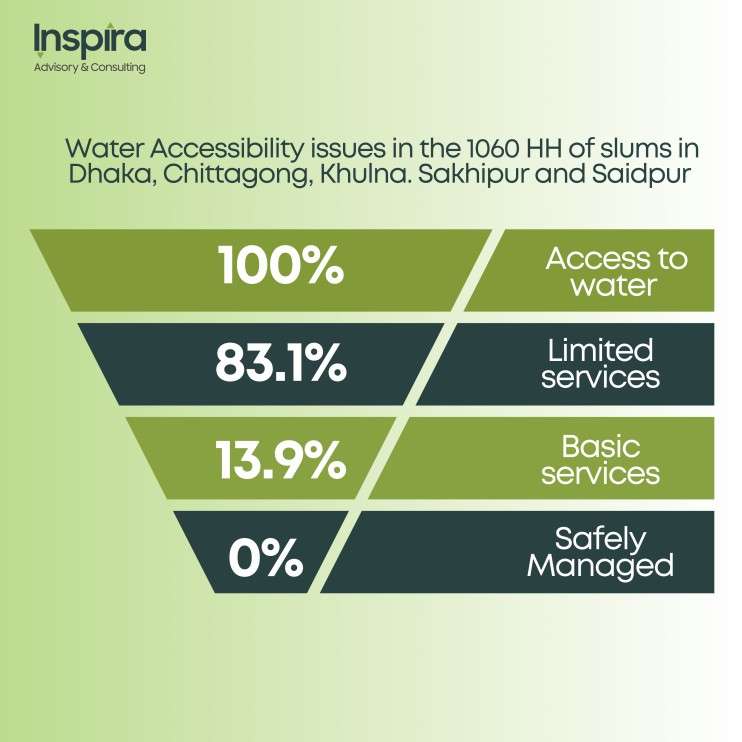
Another critical issue plaguing the lives of slum dwellers is the inadequate access to safe drinking water. Many slum dwellers rely on unregulated and contaminated water sources, such as ponds, shallow wells, or water supplied through informal connections. The study, conducted in the 1060 HH of slums in Dhaka, Chittagong, Khulna. Sakhipur and Saidpur Municipality by HDRC revealed that among improved water sources in the surveyed slums, 0% were safely managed. This lack of access to safe drinking water poses severe health risks, leading to the spread of waterborne diseases.
Slum dwellers grappling with critical sanitation and hygiene conditions
The low percentage of urban population using basic sanitation services in Bangladesh, as reported in 2020, places the country behind other South Asian nations such as Pakistan, Afghanistan, and Nepal. This highlights the significant challenges faced by slum dwellers in accessing proper sanitation facilities and adhering to hygiene practices. The study conducted in 200 slums of Chattogram further emphasized the limited resources and challenging living conditions, which contribute to variations in hygiene practices and knowledge levels among slum residents. The overcrowded nature of these areas, along with restricted access to essential resources and inadequate infrastructure, exacerbates the sanitation crisis. The prevalence of shared and unhygienic toilets, as well as the practice of open defecation, significantly contribute to the spread of diseases in slum communities. Additionally, the susceptibility of the fecal sludge management system to uncontrolled waste disposal further compounds the sanitation challenges, as evidenced by the World Bank study conducted in Dhaka’s slums. The study revealed that a portion of households resort to direct emptying of their sanitation facilities into nearby water bodies or open ground, exacerbating the pollution and health risks.

Slum waste woes reaches the crisis point: An untold suffering
In slum areas, inadequate waste collection services contribute to the accumulation of garbage in congested spaces. The lack of proper waste disposal facilities worsens the situation, with limited designated areas for waste management. For instance, the Kallyanpur Pora Bosti, one of the largest slums in the capital, suffers from indiscriminate waste dumping, further deteriorating the already poor living conditions. This mismanagement of waste leads to an increase in diseases, affecting over 34% of slum dwellers. It is alarming that around 30% of Dhaka’s population resides in slums, where most of them are formed by dumping waste in low-lying areas. Shockingly, over 26% of households in Dhaka, particularly in slum neighborhoods, lack sanitary toilets, and 70% have no access to sewerage systems. As a consequence, the physical and mental health of the slum population remains at significant risk due to this ongoing poor waste mismanagement.
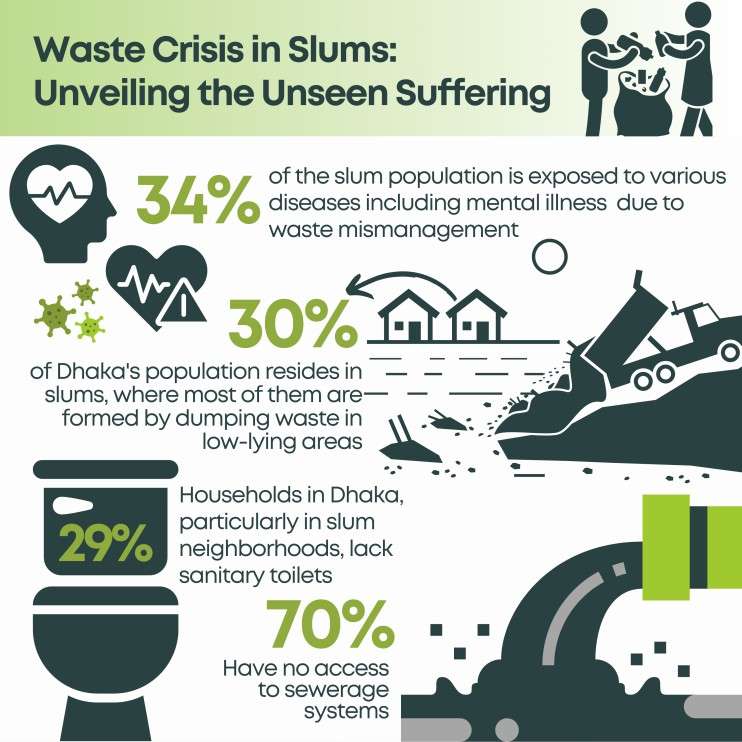
To uplift the lives of slum dwellers in Bangladesh, it is imperative to prioritize comprehensive interventions. This includes implementing sustainable water supply systems, improving sanitation facilities, promoting hygiene education, and establishing effective waste management practices. By investing in these initiatives, we can empower slum communities, improve their health outcomes, and pave the way for a more sustainable and inclusive future.


